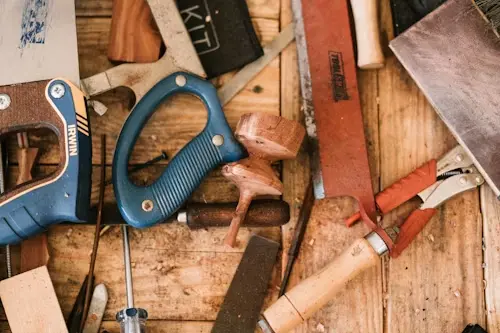Well-made wood furniture does not stay frozen in time. It doesn’t look the same year after year. It shifts subtly, develops a patina, softens around the edges, and reflects the years of use it has absorbed. This is not a flaw. It’s the reason you buy it in the first place.
From dining tables to desks, quality woodcraft is designed to age well. The right piece becomes less a fixture and more a constant companion, taking on a life of its own.
Choosing Materials That Mature
The way wood ages depends on the species, the cut, and the treatment. Quarter-sawn oak resists warping and shows distinctive medullary rays. Walnut deepens to a rich, dark tone over time. Maple maintains a tight, clean grain that feels timeless.
The key is to choose materials that are meant to grow older without losing integrity. The finish should also work with the wood rather than against it. A natural oil or wax allows the surface to breathe and wear gracefully, while heavy plastic coatings chip and peel.
The Canadian Conservation Institute notes that surface finish is more than aesthetic. It is a protective layer that shields against moisture, abrasion, and light damage. A well-applied finish that can be renewed over the years is essential for long-term preservation.
Why Craftsmanship Matters
Wood alone is not enough. The way it is shaped, joined, and assembled determines how it will hold up over decades of use. Dovetail joints, mortise and tenon, and dowel construction are proven to stand the test of time.
Good craftsmanship also anticipates repair. Loose joints can be tightened. Tabletops can be refinished. This is why investing in reputable furniture that lasts a lifetime is worth it. Pieces built for durability and repair ensure you are not replacing them every few years.
Environmental Care Is Part of Longevity
Aging beautifully is not just about the piece itself, but the conditions in which it lives. Institutions like the Smithsonian Museum Conservation Institute and the Canadian Conservation Institute recommend keeping wooden furniture in a stable environment.
Relative humidity should ideally remain between 40 and 60 percent. Rapid changes in temperature or humidity can cause wood to crack, warp, or separate. Direct sunlight can bleach or damage finishes. Gentle dusting along the grain with a soft cotton cloth prevents surface buildup without harming the finish.
These practices are not complicated, but they make the difference between a piece that grows better with age and one that deteriorates prematurely.
When Signs of Wear Appear
Wear is inevitable. The difference is in how it is addressed. A chip in the finish is not a reason to discard a table. A sticky drawer is not a sign of failure. These are the natural outcomes of use, and they can be repaired.
Refinishing, tightening joints, or reapplying a protective coat are all part of keeping a piece in circulation. The Canadian Conservation Institute emphasizes that maintenance is preventive care in action. Choosing pieces that allow for this upkeep is the foundation of longevity.
The Value of Furniture That Ages
Dining tables, desks, and cabinets from makers who prioritize timeless design have one thing in common: they reward care and time. Scratches are not defects but part of a long record of use. A softened edge is not wear but a reminder the piece has been lived with.
Patina is not a downgrade. It is proof the piece was worth keeping.
Final Thoughts
From dining tables to desks, woodcraft that ages beautifully is an investment in durability, usability, and design that lasts. When you choose materials that mature, construction that anticipates repair, and care that preserves integrity, you end up with furniture that remains in service for decades.
The beauty of these pieces is that they do not resist time. They collaborate with it.
